Join us for conversations that inspire, recognize, and encourage innovation and best practices in the education profession.
Available on Apple Podcasts, Spotify, Google Podcasts, and more.
Look for the following topics in the video, indicated by the ![]() onscreen icon, and click below to learn more.
onscreen icon, and click below to learn more.
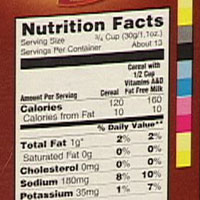 Energy and Life |
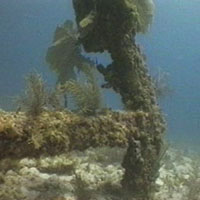 Communities |
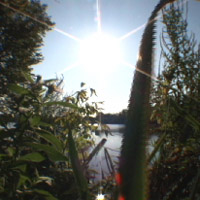 Photosynthesis |
||
 Energy Pyramids |
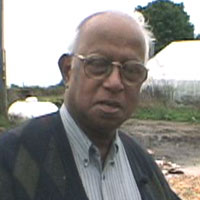 Scientist at Work |
Curriculum Resources |
||
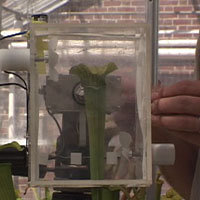
Cell Respiration
In the video for Session 1 (What is Life?), the need for a constant supply of new energy was defined as one of the five characteristics used to define life. But what is energy? In many dictionaries, energy is defined as “the capacity to do work.” One way to apply this definition to the living world is to recognize that living things are both highly organized and constantly active. Energy does the work that sustains these things. Without energy, life disorganizes and comes to a halt.

Calories indicate the amount of chemical energy in food
There are several properties of energy that characterize its connection to life.
Energy exists in different forms: Electricity, light, sound, heat, and the movement of large objects are all forms of energy. The energy stored in molecules, called chemical energy, is another form. The forms of energy that are most significant to life are light, the chemical energy in food, and heat, which is a by-product of all energy reactions.
Energy can change forms: In the living world, photosynthesis changes light energy into chemical energy that is stored as sugar. The energy in sugar is released when it is “burned” during the process of cell respiration. Some of this energy is transferred to other molecules, and some of it is released as heat.
Energy is conserved: Energy has been found to follow the laws of thermodynamics. The first law states that energy is conserved. What this means is that in any system, the total amount of energy remains the same, even though it may change form or place. In the video, Dr. Les Kaufman burns a marshmallow. The first law of thermodynamics dictates that the amount of chemical energy stored in the marshmallow will be the same as the amount released as light and heat in the flames.
Energy tends toward disorder: The second law of thermodynamics states that when one form of energy is converted to another, the amount of useful energy tends to decrease. Put another way, in energy reactions, energy spontaneously changes from higher-quality forms to lower-quality forms. In the case of the marshmallow, what was once highly organized energy in the chemical bonds of food changed to light and ultimately heat — a very disorganized form of energy.
G. Evelyn Hutchinson said: “Disorder spreads through the universe, and life alone battles against it.” A constant supply of new energy is what keeps life organized and makes life’s activities possible.
Communities are populations of organisms that interact with each other. As with each level of organization in the living world, certain phenomena in a community act to shape and sustain it. The interactions among different populations are what hold a community together. Some interactions involve the provision of habitat. A good example is a tree that houses birds, insects, and other creatures. Other vital interactions involve reproduction, such as plants that are pollinated by insects. Symbiotic interactions, such as the relationship between algae and fungi in lichens, are also important.

The sea life that gathers around a wreck is an example of a community
Without a doubt, the most important interactions in a community involve energy flow — the transfer of energy along food chains from one organism to the next. Without this flow of energy, individual organisms cannot survive and the community collapses.
In any community, there are the producers, consumers, and decomposers. Producers include plants and some protists, bacteria, and archaea. These individuals take in energy in an inorganic (i.e., nonliving) form, such as light, and change it into food, which is an organic form of energy. This energy is used or stored in the organic molecules that compose a producer’s body.
Consumers are organisms that can’t make their own food. The most familiar consumers to us are animals. They represent the “typical” consumer in that they ingest food to obtain energy. Some animal consumers eat plants, some eat other animals, and some eat a variety of food sources. Certain protists, like the amoeba, are also consumers.
A special group of consumers is the decomposers. Like other consumers, they can’t make their own food. They differ from other consumers because they obtain their energy by decomposing the bodies of dead things. They secrete digestive chemicals onto their food and break large molecules into smaller ones that they then absorb. The most important decomposers in most communities are the fungi and the bacteria. Some protists and archaea are also decomposers.
Photosynthesis refers to the process by which light energy is harnessed and transformed into chemical energy in the form of the food sugar. More specifically, carbon dioxide and water are combined and their atoms are rearranged to form a sugar molecule. The bonds within the sugar molecule store the energy obtained from light. Oxygen from water is released as a by-product in this process.
The following is the chemical reaction for photosynthesis:

Dr. Ellison’s photosynthesis experiment
Dr. Aaron Ellison demonstrates photosynthesis in the video. A leaf from a pitcher plant is placed in a closed chamber that measures the amount of carbon dioxide in the air. As photosynthesis occurs, carbon dioxide is removed from the air and its level falls. As this happens, sugar is formed and oxygen is released.
Photosynthesis is a process that is carried out within the cells of plants as well as certain protists, bacteria, and archaea. In the eukaryotes (e.g., the plants and protists), photosynthesis is carried out in organelles called chloroplasts. Chloroplasts contain chlorophyll, a lipid that gives plants their green color. Chlorophyll is what actually captures light energy. The photons in light (i.e., the light particles) “jostle” the electrons in the chlorophyll molecule, which starts the process of energy transformation.
Interestingly, the chloroplast is actually derived from a group of bacteria known as cyanobacteria. This is one of the examples of symbiosis mentioned by our host, Dr. Doug Zook. In this case, the cyanobacteria were taken up by eukaryotic host cells billions of years ago and the ability to photosynthesize was eventually passed onto upon the host cells. In addition to being important as ancient symbionts, cyanobacteria in the ocean are responsible for most of the photosynthesis occurring on Earth today.
In photosynthesis, light energy is changed into chemical energy. The first law of thermodynamics is “obeyed” in that the amount of light that is the energy input equals the amount of chemical energy that is the output. However, the second law of thermodynamics seems to be defied. Energy emerges from photosynthesis in a more organized form as chemical energy, which is a higher-quality energy than light. This is an example of “life battling against disorder” and is possible only by the addition of energy.
Many scientists would agree that life runs on sugar. Sugar, which is a type of carbohydrate, comes from the breakdown of food. Almost all living things, even those that photosynthesize, “burn” sugar as a source of energy. The process that does this is called cell respiration. The following is the chemical reaction for cell respiration:

Dr. Ellison’s pitcher plant experiment
In cell respiration, sugar is broken down to form carbon dioxide, which is respired as a gas. In this reaction, the hydrogen in sugar combines with oxygen to form water. The energy that is released is stored temporarily in another molecule called ATP (adenosine triphosphate), which delivers and transfers the energy where it is needed. This reaction is similar to the burning of the marshmallow seen in the video in that heat is a by-product. The main difference is the nature of the reaction — cell respiration is much more controlled.
In Session 7, Dr. Aaron Ellison placed a pitcher plant in a chamber and measured the level carbon dioxide inside. When he covered the plant, preventing light from reaching it, the level increased. This would be expected as photosynthesis, which uses carbon dioxide, stopped, and cell respiration, which releases carbon dioxide, continued. Cell respiration is always occurring in living cells.
Like photosynthesis, cell respiration occurs in a special organelle. It is called the mitochondrion. As with chloroplasts, mitochondria had their origins as bacterial symbionts.
In cell respiration, the chemical energy in sugar is transferred to ATP. In the process, some of its chemical energy is changed to heat. As with photosynthesis, the amount of energy that enters the system in the chemical bonds of sugar equals the amount transferred to ATP plus the amount changed to heat. The second law of thermodynamics applies to cell respiration too. Heat is a very low-quality form of energy compared to chemical energy. Even the ATP molecules represent a decrease in organization, as they are much smaller than sugar molecules.
Some people notice that photosynthesis and cell respiration are “opposites” in terms of their chemical equations. With energy, this is true in the sense that photosynthesis stores energy while cell respiration releases it. It’s important to note, however, that energy flow is not cyclical. Energy changes forms from light to chemical to heat energy. There is no “looping back” – or, as some say, “You can’t eat heat!”

Energy Pyramid
An energy pyramid is a graphical model of energy flow in a community. The different levels represent different groups of organisms that might compose a food chain. From the bottom-up, they are as follows:
In some food chains, there is a fourth consumer level, and rarely, a fifth. Have you ever wondered why there are limits to the lengths of food chains?
An energy pyramid’s shape shows how the amount of useful energy that enters each level — chemical energy in the form of food — decreases as it is used by the organisms in that level. How does this happen?
Recall that cell respiration “burns” food to release its energy, and in doing so, produces ATP, which carries some of the energy as well as heat, which carries the rest. ATP is then used to fuel countless life processes. The consequence is that even though a lot of energy may be taken in at any level, the energy that ends up being stored there – which is the food available to the next level — is far less. Scientists have calculated that an average of 90% of the energy entering each step of the food chain is “lost” this way (although the total amount in the system remains unchanged).
The consumers at the top of a food pyramid, as a group, thus have much less energy available to support them than those closer to the bottom. That’s why their numbers are relatively few in most communities. Eventually, the amount of useful energy left can’t support another level. That’s why energy flow is depicted in the shape of a pyramid. The energy that enters a community is ultimately lost to the living world as heat.
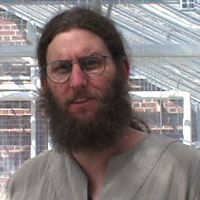 Dr. Aaron M. Ellison is senior research fellow in Organismic and Evolutionary Biology at the Harvard Forest, and adjunct professor in the graduate program in organismic and evolutionary biology at the University of Massachusetts at Amherst. He received a B.A. in 1982 from Yale University and a Ph.D. from Brown University in 1986. In 1992, during his tenure as the Marjorie Fisher Professor of Environmental Studies at Mount Holyoke College, Dr. Ellison received the National Science Foundation’s Presidential Faculty Fellow award for “demonstrated excellence and continued promise both in scientific and engineering research and in teaching future generations of students to extend and apply human knowledge.” His research foci include: food web dynamics, community ecology of wetlands and forests, evolutionary ecology of carnivorous plants, and the application of Bayesian inference to ecological research and environmental decision-making.
Dr. Aaron M. Ellison is senior research fellow in Organismic and Evolutionary Biology at the Harvard Forest, and adjunct professor in the graduate program in organismic and evolutionary biology at the University of Massachusetts at Amherst. He received a B.A. in 1982 from Yale University and a Ph.D. from Brown University in 1986. In 1992, during his tenure as the Marjorie Fisher Professor of Environmental Studies at Mount Holyoke College, Dr. Ellison received the National Science Foundation’s Presidential Faculty Fellow award for “demonstrated excellence and continued promise both in scientific and engineering research and in teaching future generations of students to extend and apply human knowledge.” His research foci include: food web dynamics, community ecology of wetlands and forests, evolutionary ecology of carnivorous plants, and the application of Bayesian inference to ecological research and environmental decision-making.
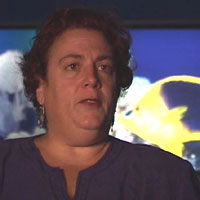 Dr. Marianne Farrington is the associate director of the Edgerton Research Laboratory at the New England Aquarium in Boston, Massachusetts. Dr. Farrington earned a Ph.D. in Biochemistry at Pennsylvania State University in 1987, before going on to Northeastern University to complete her post-doctorate work. In 1991, she joined the New England Aquarium’s Edgerton Research laboratory. She began a course of work that led to the analysis of juvenile groundfish bycatch survival in Northwest Atlantic Fisheries. While at the Aquarium, Dr. Farrington also taught human genetics, biochemistry, molecular biology of the cell, as well as introductory biology courses through Northeastern University’s division for returning adults, University College.
Dr. Marianne Farrington is the associate director of the Edgerton Research Laboratory at the New England Aquarium in Boston, Massachusetts. Dr. Farrington earned a Ph.D. in Biochemistry at Pennsylvania State University in 1987, before going on to Northeastern University to complete her post-doctorate work. In 1991, she joined the New England Aquarium’s Edgerton Research laboratory. She began a course of work that led to the analysis of juvenile groundfish bycatch survival in Northwest Atlantic Fisheries. While at the Aquarium, Dr. Farrington also taught human genetics, biochemistry, molecular biology of the cell, as well as introductory biology courses through Northeastern University’s division for returning adults, University College.
 Dr. Les Kaufman is an associate professor of biology at Boston University. He also is a fellow at the Harvard University Museum of Comparative Zoology and a research scholar at the New England Aquarium. Professor Kaufman earned his Ph.D. at John Hopkins in theoretical ecology and evolutionary biology in 1980. His research is in evolutionary ecology and applied research in marine conservation biology, where his focus is on various fish ecologies. In 1997, Professor Kaufman started a research and graduate training effort to encourage a switch from classical fisheries to ecosystem-based marine resource management. The project is active in New England, East Africa, Florida, California, and the tropical Pacific and Atlantic Oceans, and is also engaged with the New England Fishery Management Council and the California Department of Fish and Game.
Dr. Les Kaufman is an associate professor of biology at Boston University. He also is a fellow at the Harvard University Museum of Comparative Zoology and a research scholar at the New England Aquarium. Professor Kaufman earned his Ph.D. at John Hopkins in theoretical ecology and evolutionary biology in 1980. His research is in evolutionary ecology and applied research in marine conservation biology, where his focus is on various fish ecologies. In 1997, Professor Kaufman started a research and graduate training effort to encourage a switch from classical fisheries to ecosystem-based marine resource management. The project is active in New England, East Africa, Florida, California, and the tropical Pacific and Atlantic Oceans, and is also engaged with the New England Fishery Management Council and the California Department of Fish and Game.

Dr. Sanat Majumder is a professor emeritus of biology, at Westfield State College. While active, Professor Majumder taught a variety of courses, including environmental biology; population, food, and nutrition; and plant physiology. In addition to teaching at Westfield State College, Professor Majumder taught at Smith College and St. Louis University. As a post-doctoral fellow, Majumder’s research in radiation biology took him to Brookhaven National Laboratory and the University of Hawaii in Honolulu. Professor Majumder has published a book, The Drama of Man and Nature, as well as nearly 30 scientific papers. A native of India, Professor Majumder currently resides in Northampton, Massachusetts.
SCIS 3+ consists of 13 units and spans from kindergarten through sixth grade. The concepts developed in each unit of SCIS 3+ are elaborated upon throughout the program.
Students acquire a strong background for building scientific literacy that enables them to make intelligent decisions about their environment and the world in which they live.
Completely activity-based, the SCIS 3+ approach is based upon current research as to how children learn. The original program, SCIS, integrated the learning theories of Jean Piaget. Using the Learning Cycle strategy, students are led to discover concepts through their investigations with a wide variety of manipulative materials and live organisms.
SCIS 3+ is a revision of the work of the Science Curriculum Improvement Study, which was developed at the Physics Department and the Lawrence Hall of Science of the University of California at Berkeley with the support of the National Science Foundation. Development of SCIS 3+ was supported and copyrighted by Delta Education. For more information, contact:
Delta Education, Inc.
phone: 1-800-258-1302
https://www.deltaeducation.com/